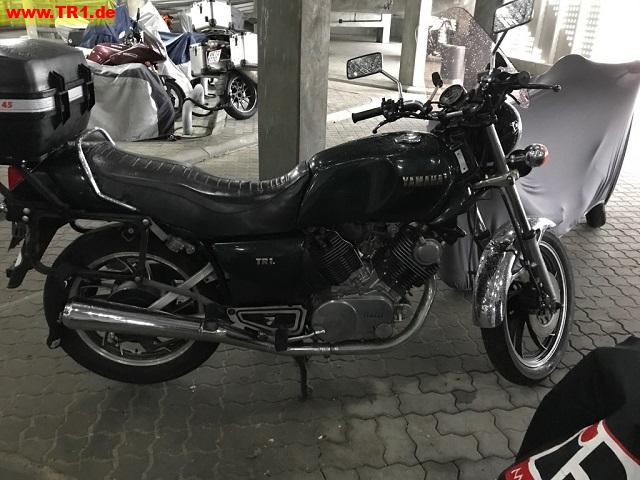Post by briandk on 10.09.17 at 09:50:55
Hi guys, hello from Denmark.
I've been following the forum with for some time soaking in tips, while waiting to close the deal on an 83 TR1 which I finally got yesterday.
It's in pretty nice condition despite having 73000 km on the clock, needs a new battery as the old one is from 2008 and seems on it's last legs, but has otherwise been taken great care of.
Along with the bike, I got an extra TR1 that is about 90% complete, but has only driven 2600 km. Most of it's cosmetic parts have been removed when it was new and wrapped up in plastic, so it's pretty prestine. The extra bike has a bit of an interesting history, as it was used for a review in a danish motorcycle magazine in 1981 (I'll attach the article, it's in danish but might be interresting, I can translate to english if anyone is interested). The extra bike has never been registered in Denmark and vehicle tax has never been paid on it, so I'm not sure what it involve to get it on the road. It also has a bit of a weird frame (and matching engine) number compared to any other I've seen: 003G-4E-03 any help decoding that would be appreciated.
Article and pictures of the extra bike: https://imgur.com/a/pmY7S
My apologies for writing in English, I do understand and speak German, but my skills in writing it are severely lacking :)

I've been following the forum with for some time soaking in tips, while waiting to close the deal on an 83 TR1 which I finally got yesterday.
It's in pretty nice condition despite having 73000 km on the clock, needs a new battery as the old one is from 2008 and seems on it's last legs, but has otherwise been taken great care of.
Along with the bike, I got an extra TR1 that is about 90% complete, but has only driven 2600 km. Most of it's cosmetic parts have been removed when it was new and wrapped up in plastic, so it's pretty prestine. The extra bike has a bit of an interesting history, as it was used for a review in a danish motorcycle magazine in 1981 (I'll attach the article, it's in danish but might be interresting, I can translate to english if anyone is interested). The extra bike has never been registered in Denmark and vehicle tax has never been paid on it, so I'm not sure what it involve to get it on the road. It also has a bit of a weird frame (and matching engine) number compared to any other I've seen: 003G-4E-03 any help decoding that would be appreciated.
Article and pictures of the extra bike: https://imgur.com/a/pmY7S
My apologies for writing in English, I do understand and speak German, but my skills in writing it are severely lacking :)
